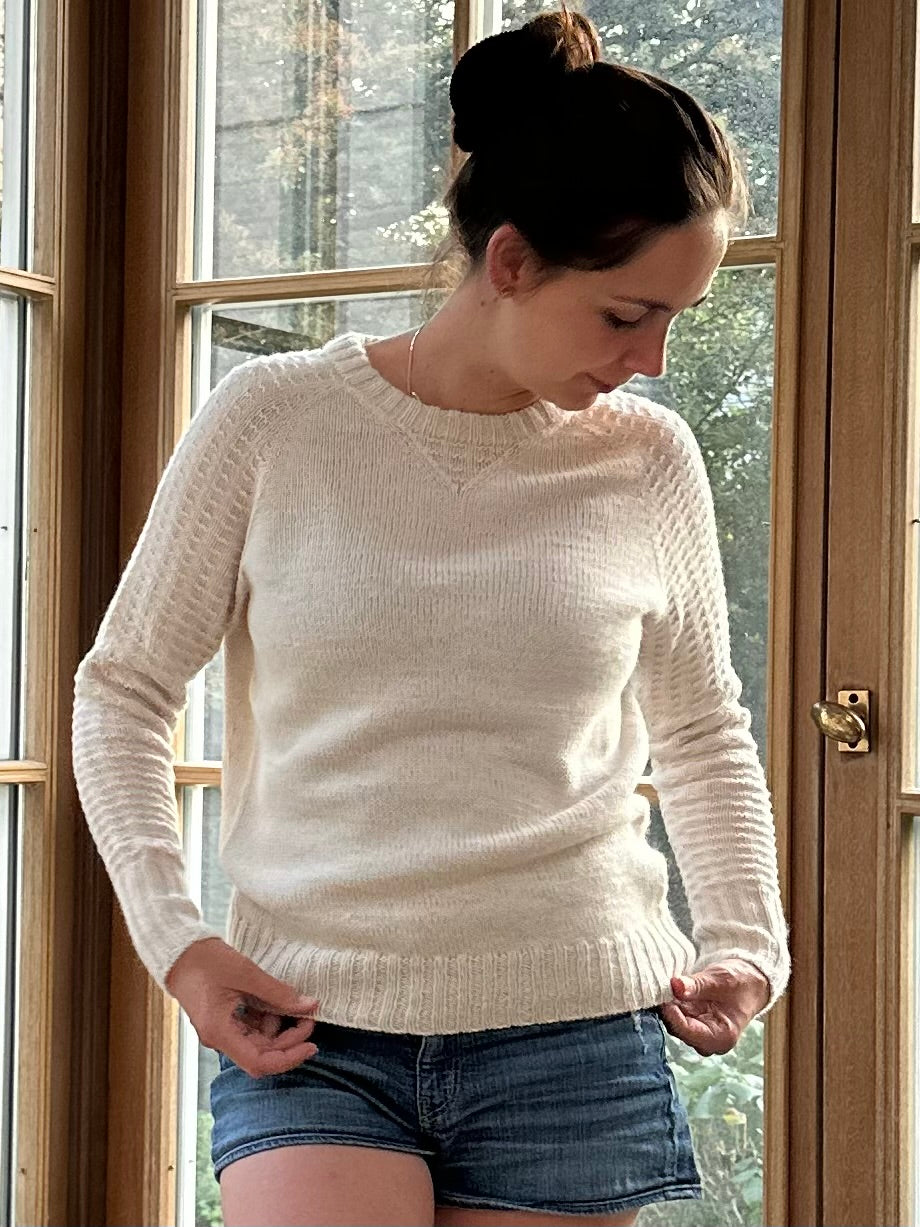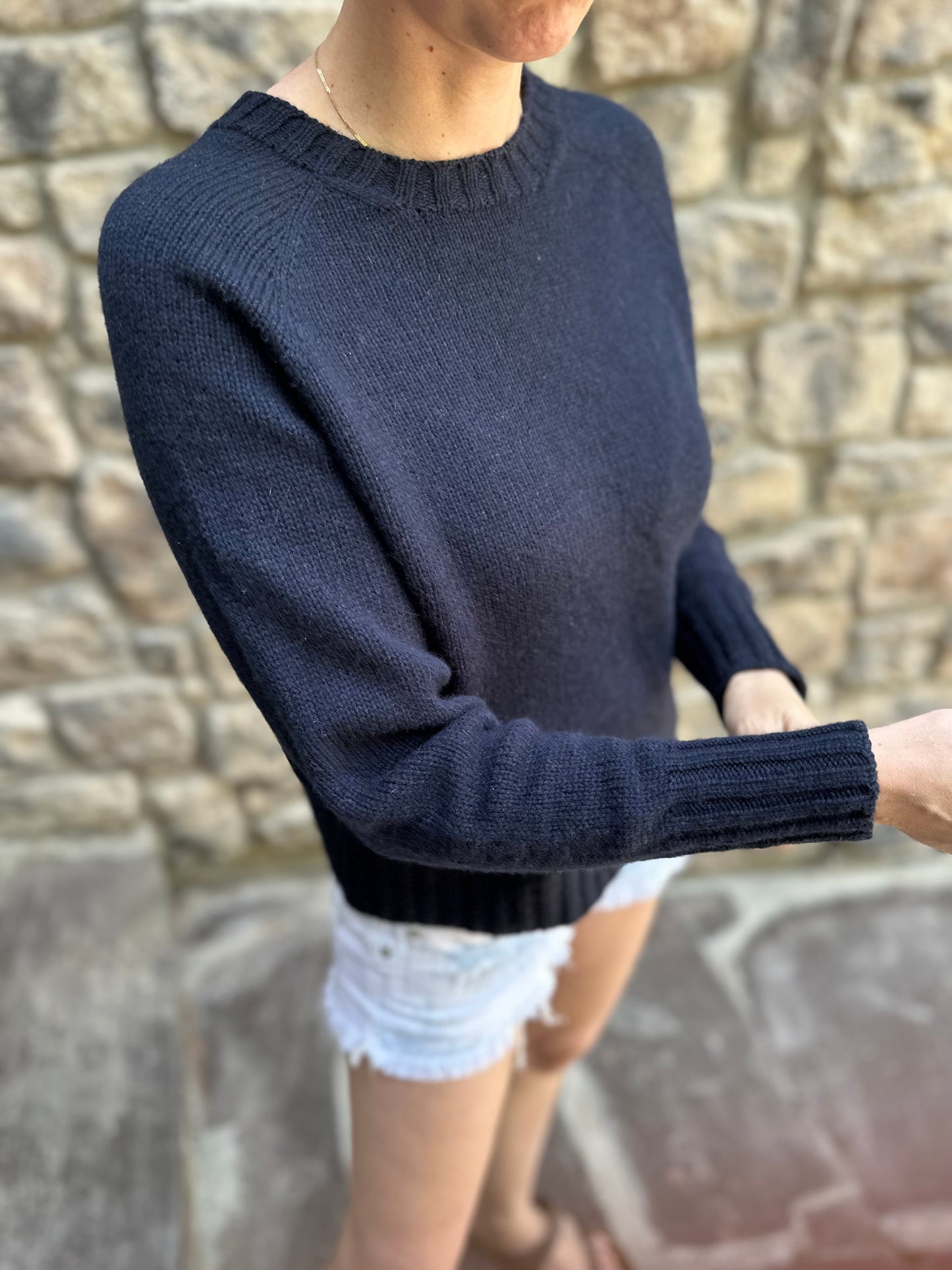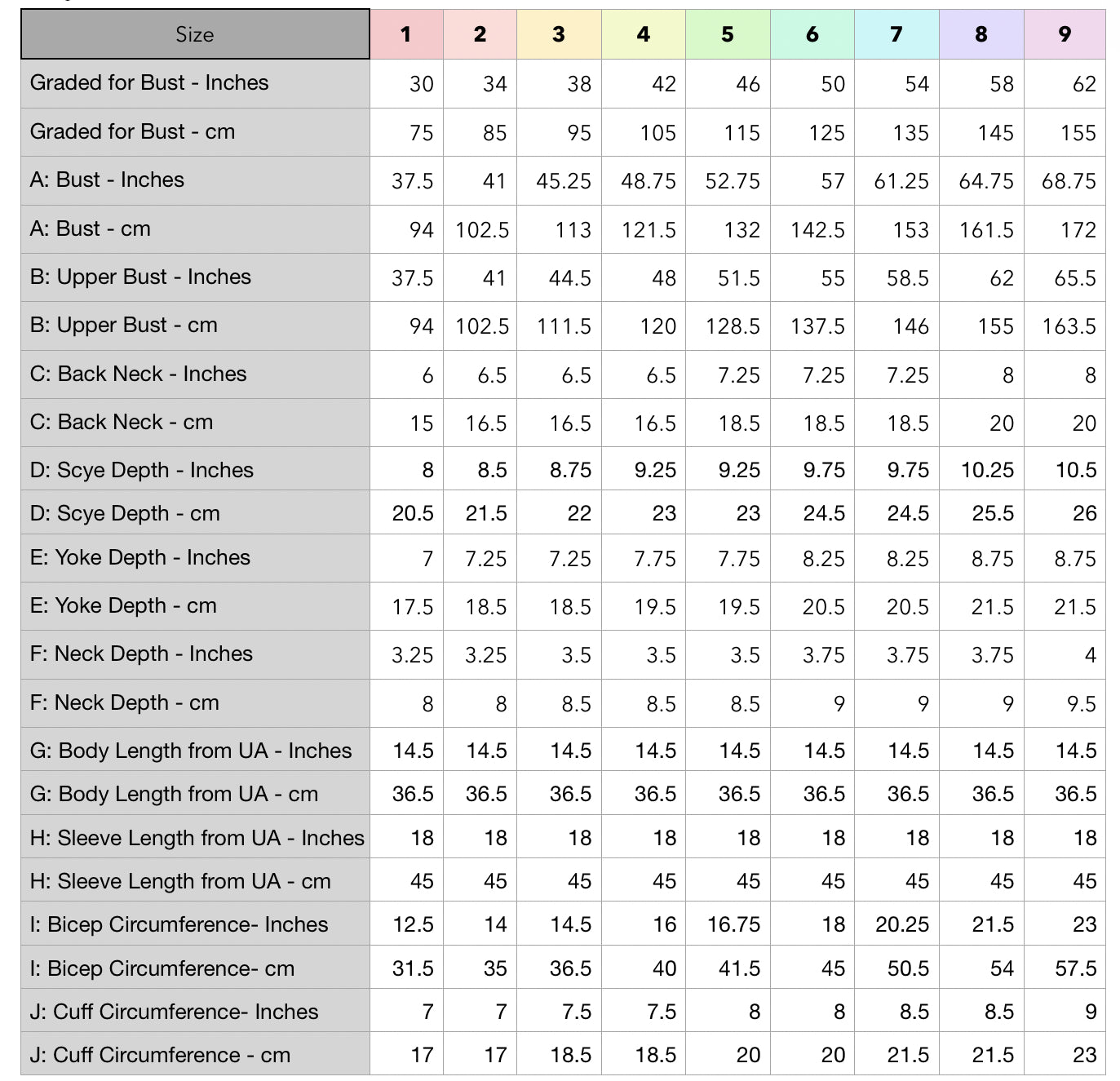Back Neck: Too narrow feels constricting, too wide will slide around.
Yoke Depth: This may not need to be as deep as you might expect
Sleeve CO Width: 1/2 this measurement is added to the Yoke Depth to calculate Scye Depth (armhole depth), it also impacts neckline depth.
These measurements vary significantly less across the size range than the full bust circumference. This is why compound raglans work well, you can get from similar neckline measurements to a much larger full bust circumference without significantly increasing the yoke depth.
Armhole depth tends to be a personal preference, but in general armholes that are too shallow feel constricting and tight. Similarly armholes that are too deep can actually limit the arm’s range of movement (the yoke becomes a straight jacket of sorts).
It’s good to know your preference, and that armhole depth is determined by yoke depth plus 1/2 the sleeve cast on width. For example, a 5” yoke depth with a 4” sleeve cast on width results in ~7” armhole depth. A 6” yoke depth with a 2” sleeve cast on width also results in a ~7” armhole depth. Knowing this can help you compare patterns, determine your ideal armhole depth, and make adjustments to patterns if necessary.
Tips for Designing Your Own
1. Decide on the garment measurements before casting on. Many books / articles will recommend casting on for the back neck and then working increases every other row at all the raglan seams until you reach full bust width. This does not work for many sizes. Instead, in addition to determining back neck width, decide how much ease you want at the full bust and bicep, how deep you want the yoke to be, and your total neck circumference or sleeve cast on width. Use those measurements to figure out how much you need to increase in each section.
2. Round your target measurements for the bust and bicep to the nearest multiple of 4. Even in a stockinette sweater this helps all the math work out more easily. Plus, it helps with having the right stitch counts for the most common types of trim.
3. Don’t forget about the underarm cast on. A comfortable width tends to be around 2”-4” at each underarm. When determining how many stitches need to be increased for the body and the sleeves, remember to subtract the underarm stitches.
E.g. To calculate desired back stitches, assuming you want the front and back to be the same width:
=(Total desired body stitches - 2x the underarm width) / 2.
Subtract your back neck stitches from this result to find out how many stitches need to be increased, then divide that by 2 for the total number of increase rows that need to be worked (generally each increase row increases 2 stitches, one at each raglan). Based on your yoke depth you can then decide how you want to space out these increase rows. Progress charts are really helpful for visualizing how this will look.
Generally the front will have a similar shaping rate to the back, but you’ll have to do the same exercise for the sleeves.
4. Neckline width and depth don’t change much across the size range. Commonly with front neckline shaping a section is worked straight before the shaping begins. In raglans 1/2 the sleeve cast on tends to serve as this straight portion, and so we frequently move straight into neck shaping. Since the sleeve cast on should also naturally increase across the size range, the necklines will gradually get deeper even if the same number of neckline shaping rows are worked.
5. Watch out with yoke depths. This may not need to vary across the size range as much as expected, for the same reason as 4.










